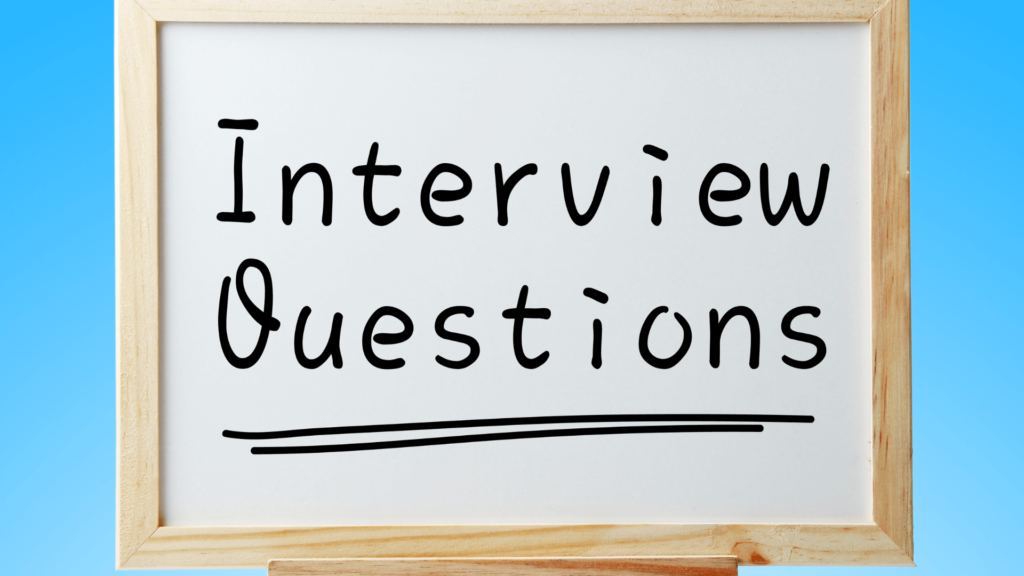Top 10 Teaching Assistant Interview Questions and Answers for a Successful Job Interview

1. What Qualifications Do You Have to Be a Teaching Assistant?
- 1. What Qualifications Do You Have to Be a Teaching Assistant?
- 2. What Qualities Make You a Good Teaching Assistant?
- 3. What Is Your Experience Working With Children?
- 4. How Do You Handle Difficult Situations With Students?
- 5. What Is Your Approach to Classroom Management?
- 6. How Do You Handle Conflict With Students and Teachers?
- 7. What Strategies Do You Use to Encourage Student Engagement?
- 8. What Kinds of Activities Do You Plan for the Classroom?
- 9. How Do You Handle Disruptive Students?
- 10. What Kind of Feedback Do You Give to Students?
To be a successful teaching assistant, certain qualifications are necessary. This may include a high school diploma or equivalent, post-secondary education, such as a certificate or associate's degree in education or a related field, prior experience with children, strong communication abilities, and effective organizational skills.
Additionally, depending on the educational setting, certain credentials may be required, such as knowledge of particular learning disabilities or early childhood education. Finally, a commitment to ongoing professional development is highly valued in the field of education.
To become an effective teaching assistant, a combination of the right qualifications, experience, and passion for education is essential. A minimum of a high school diploma or its equivalent is generally expected, as well as post-secondary education in a related field.
Furthermore, having prior experience working with children is beneficial, demonstrating the ability to interact with students and understand their needs. Additionally, excellent communication and organizational skills are critical for success in this role.
Furthermore, roles in special education or early childhood education may necessitate additional credentials. Finally, a dedication to ongoing professional development is necessary to stay current with best practices and meet the changing needs of students.
2. What Qualities Make You a Good Teaching Assistant?
Being a successful teaching assistant necessitates the possession of certain qualities. Foremost among them is strong communication, which enables teaching assistants to share information with pupils, coordinate with instructors, and address any worries or queries that may arise.
Additionally, being an attentive listener is indispensable for comprehending students' needs and providing appropriate aid.
Adaptability is another essential quality of a good teaching assistant. Classrooms are constantly shifting environments that necessitate the capability to respond to sudden changes, accommodate a variety of learning styles, and offer custom-made assistance to students who might require extra help.
Finally, patience is an indispensable trait for a teaching assistant. Working with students can be challenging at times, and it is important to remain composed and tolerant when confronted with difficult circumstances.
Patience enables teaching assistants to deliver guidance and assistance to students in their academic journey and is particularly beneficial when working with students who may require more time and effort to comprehend particular concepts.
3. What Is Your Experience Working With Children?
When it comes to an interview for a teaching assistant role, it is essential to emphasize any relevant experience and demonstrate your capacity for connecting with children. Relaying stories of your previous involvement in educational settings, such as volunteering in a local school or participating in after-school programs, can demonstrate your hands-on knowledge of working with children.
Additionally, highlighting any certifications or training you have obtained in child development or education can further demonstrate your commitment to comprehending and meeting the needs of young learners.
By accentuating your experience with children, you can assure the interviewer that you are well-prepared to support and engage students in the classroom.
When discussing your experience with children, it is vital to not only share the quantity of your experience but also the quality of your interactions. Offering specific instances of situations in which you have successfully related to and supported children can demonstrate your capability to build relationships and create a positive learning environment.
For example, you could mention a time when you helped a struggling student overcome an obstacle or when you effectively connected with a student's parents to address their worries.
By spotlighting these experiences, you can illustrate your aptitude to cultivate a supportive and inclusive classroom environment, which is critical for the role of a teaching assistant.
4. How Do You Handle Difficult Situations With Students?
When it comes to managing complex scenarios with students, a teaching assistant must have sound interpersonal abilities and the capacity to keep tranquil under pressure. One approach is to actively listen to the student's worries and recognize their emotions.
This can help construct a bond of trust and foster open communication. Additionally, it is important to maintain an even-tempered attitude and dodge intensifying the issue further.
By utilizing effective communication methods, such as utilizing open-ended questions and echoing, the teaching assistant can advance understanding and discover a solution that meets the needs of both the student and the academic setting.
Another technique for addressing complex situations with students is to employ positive behavior management methods. This includes concentrating on reinforcing positive behaviors rather than solely focusing on negative behaviors.
By spotlighting and rewarding desired behaviors, the teaching assistant can motivate students to make better decisions and generate a more upbeat classroom atmosphere.
Additionally, establishing clear expectations and consistently implementing classroom regulations and consequences can help avert complex scenarios from occurring in the first place.
Finally, a teaching assistant needs to be proactive in seeking help and counsel when confronted with complicated scenarios involving students. This can involve consulting with the classroom teacher, school counselor, or other professionals who may have valuable insights and approaches for managing tricky behaviors.
By cooperating with others and taking advantage of available resources, the teaching assistant can guarantee that they are supplying top-notch support to students in difficult situations.
5. What Is Your Approach to Classroom Management?
Maintaining an organized and productive learning environment is crucial for successful classroom management. To achieve this, it is important to set clear expectations and rules at the outset. By doing so, students understand what is expected of them, creating an atmosphere of structure and stability.
Additionally, fostering a supportive and inclusive environment where students feel comfortable and accepted is essential for minimizing disruptive behavior.
In addition to establishing guidelines, implementing engaging and interactive teaching strategies is key for successful classroom management. By providing students with a variety of instructional methods, such as group work, hands-on activities, and technology-based learning, their interest in the lesson can be maintained while reducing the potential for disruptive behavior.
Furthermore, allowing students a degree of autonomy within the classroom encourages them to take ownership of their learning and be more invested in the process.
When faced with disruptive behavior, it is important to take a moment to assess the situation before responding. Maintaining a calm and composed demeanor when dealing with these issues is essential, and employing positive reinforcement, redirecting the student's attention, and implementing consequences when necessary can help to address the problem.
Additionally, communicating with other school staff members is important for maintaining consistency in the disciplinary approach.
Finally, establishing positive relationships with students is an important factor in classroom management.
Showing genuine interest in their lives, actively listening to their concerns, and providing personalized support when needed can foster a sense of trust and mutual respect which can help to maintain an organized learning environment.
6. How Do You Handle Conflict With Students and Teachers?
When it comes to handling disputes between students and teachers, a teaching assistant needs to have strong communication and problem-solving abilities. Conflict may arise in a variety of situations, such as disagreements over classroom regulations or miscommunications between students and instructors.
A teaching assistant should take an empathetic and understanding approach to resolving these difficulties, actively listening to both sides of the argument.
By encouraging dialogue and providing open lines of communication, disagreements can be addressed constructively. Furthermore, a teaching assistant should be able to mediate the conflict and come up with a mutually beneficial solution.
A successful strategy for handling conflict is to create a safe and welcoming atmosphere in which both students and teachers can express their opinions.
This encourages individuals to bring their concerns to light quickly, preventing the situation from escalating into a bigger issue. It is also important for a teaching assistant to remain neutral and impartial when mediating the conflict, making sure that all parties feel heard and respected.
By developing an inclusive classroom culture, potential conflicts can be avoided, and the relationship between students and teachers can be strengthened.
Conflict resolution skills are essential for a teaching assistant to effectively manage difficult situations. When handling disputes, it is essential to remain composed and professional, setting a positive example for students.
It is crucial to actively listen and validate the emotions and concerns of all involved, helping to de-escalate the conflict and find a satisfactory compromise. In addition, a teaching assistant should be proactive in addressing conflicts, rather than allowing them to linger and disrupt the classroom environment.
By addressing issues promptly and assertively, a teaching assistant can help create a conducive and productive learning environment.
Finally, it is important for a teaching assistant to regularly evaluate their strategies and techniques for resolving conflicts. Seeking feedback from students and teachers can help identify areas for improvement and allow for the implementation of techniques that promote successful conflict resolution.
Additionally, ongoing professional development and training in conflict resolution can help a teaching assistant gain the necessary skills and knowledge to handle disputes respectfully and fairly.
All in all, the ability to effectively manage conflict with students and teachers is an invaluable asset for a teaching assistant in establishing a harmonious and collaborative learning environment.
7. What Strategies Do You Use to Encourage Student Engagement?
Successfully engaging with students is a crucial aspect of the job of a teaching assistant. To do so, there are a variety of strategies that can be employed. These include the use of interactive activities and group work, the integration of technology, tailored instruction, and the creation of a positive classroom environment.
Interactive activities and group work are a great way to get students involved in the learning process. By providing hands-on tasks and collaborative projects, students are encouraged to actively participate and connect with the material. Similarly, educational apps and online platforms can also boost student engagement, allowing for a more interactive and personal learning experience.
Differentiated instruction is also essential for fostering student engagement. This involves tailoring teaching methods and materials to the needs and preferences of individual students. By recognizing the strengths, weaknesses, and interests of each student, a teaching assistant can adapt the lesson plans and activities to suit their learning style.
Offering students options for how they learn and demonstrate their understanding can significantly improve their motivation and participation.
Finally, to encourage student involvement, it is important to cultivate a positive and inclusive classroom atmosphere. This can be achieved by clearly communicating expectations, encouraging open dialogue, and ensuring that all students feel a sense of belonging.
A teaching assistant can foster student engagement by actively listening to their ideas and opinions, appreciating their contributions, and providing constructive feedback.
By building positive relationships with students, a teaching assistant can establish a supportive learning setting where students are motivated and eager to engage.
8. What Kinds of Activities Do You Plan for the Classroom?
When organizing activities for the classroom, a teaching assistant needs to take into account the student's various needs and learning styles. An effective way to engage students is through interactive group activities.
These types of tasks not only stimulate teamwork and collaboration but also give students the chance to learn from each other. For example, a teaching assistant could set up a group assignment where students work together to solve a problem or complete a task.
This not only allows for critical thinking and problem-solving techniques to be sharpened but also helps students hone their social and communication abilities.
In addition, hands-on experiments or demonstrations can also be planned for the classroom. Through these activities, students can be actively involved with the subject matter and gain practical experience.
For instance, a teaching assistant could organize a science experiment that allows students to explore and observe a scientific concept firsthand. Not only does this make the learning process more entertaining and memorable, but it also helps students gain a more profound comprehension of the topic.
Moreover, incorporating technology into classroom activities can be an effective tool to engage students and improve their learning experience. For instance, a teaching assistant could plan a virtual field trip where students can explore different places and cultures through online resources.
Not only does this introduce the outside world into the classroom, but it also assists students in developing digital literacy skills and exposes them to new points of view.
Finally, integrating artistic and creative activities can also be beneficial for students. For example, a teaching assistant could plan an art project where students can express their imagination and explore different mediums.
This not only allows students to tap into their creative side and self-expression but also helps develop their fine motor skills and increases their self-esteem.
By offering a selection of activities that cater to different interests and learning styles, teaching assistants can build a dynamic and captivating classroom atmosphere.
9. How Do You Handle Disruptive Students?
Managing disruptive pupils in the classroom can be a difficult task for teaching assistants. However, it is important to approach such situations with understanding and patience. Establishing clear rules and expectations from the start of the school year is an effective strategy to ensure that students understand and abide by the guidelines.
It is also important to address disruptive behavior promptly and privately, allowing the students to express themselves while guiding acceptable behavior.
Positive reinforcement is another approach to handling disruptive students. Acknowledging and rewarding positive behavior encourages students to continue the same behavior in the classroom. This can be done through verbal praise, small rewards, or even a system of points or stickers.
By emphasizing the advantages of positive behavior and cultivating a positive classroom atmosphere, disruptive behavior can be minimized.
In addition, it is important to take the time to understand the underlying causes of disruptive behavior. Having open and honest conversations with the student can help to identify any issues they may be facing outside of the classroom.
Offering support and resources such as counseling services or extra academic assistance can help to alleviate disruptive behavior.
Finally, the successful handling of disruptive students requires collaboration between the lead teacher and other staff members. Working together as a team allows for a unified approach to addressing disruptive behavior and ensures that students receive consistent messages about appropriate conduct.
By maintaining open communication and sharing information about the student's progress and challenges, the entire school community can support the student's overall development.
10. What Kind of Feedback Do You Give to Students?
When it comes to providing feedback to students, teaching assistants are integral in helping them progress and refine their skills. Specific and constructive feedback is essential for this purpose; rather than simply praising a student, it is important to point out the areas of strength and those that need improvement.
For example, when evaluating an essay, a teaching assistant can comment on the clarity of the arguments, the structure of the ideas, and the evidence provided to back up their points.
In this way, students can gain insight into what they are doing successfully and what they can work on to improve.
In addition to being specific, it is also important to focus on the progress made by the student. Recognizing their efforts and progress will boost their confidence and spur them on to keep striving. For instance, if a student has been struggling with a certain math concept, the teaching assistant can recognize the advancements they have made in understanding the topic.
This acknowledgment validates their hard work and encourages them to carry on.
Finally, teaching assistants should provide actionable feedback. This means offering concrete strategies for improvement. For instance, if a student is having difficulty with time management, the teaching assistant can provide advice on creating a study plan or breaking down tasks into smaller, more manageable chunks.
By providing helpful guidance, students can capitalize on the feedback and take steps to make positive changes. Ultimately, the feedback should be tailored to each student's needs and learning style, so that it is useful and supportive.
Leave a Reply




Related Posts